Bespoke Partnership
Designed by Herzog & de Meuron, One Park Drive is Canary Wharf’s signature residential building
In three decades, London’s Canary Wharf Group has regenerated a desolate area of the Docklands into a global business epicentre: a densely-packed 128 acres with an international reputation as upstanding as its iconic skyline. It has seen the capital’s economic centre of gravity shift eastwards from the City and a high benchmark for civic engineering set in the process. It’s a remarkable achievement.
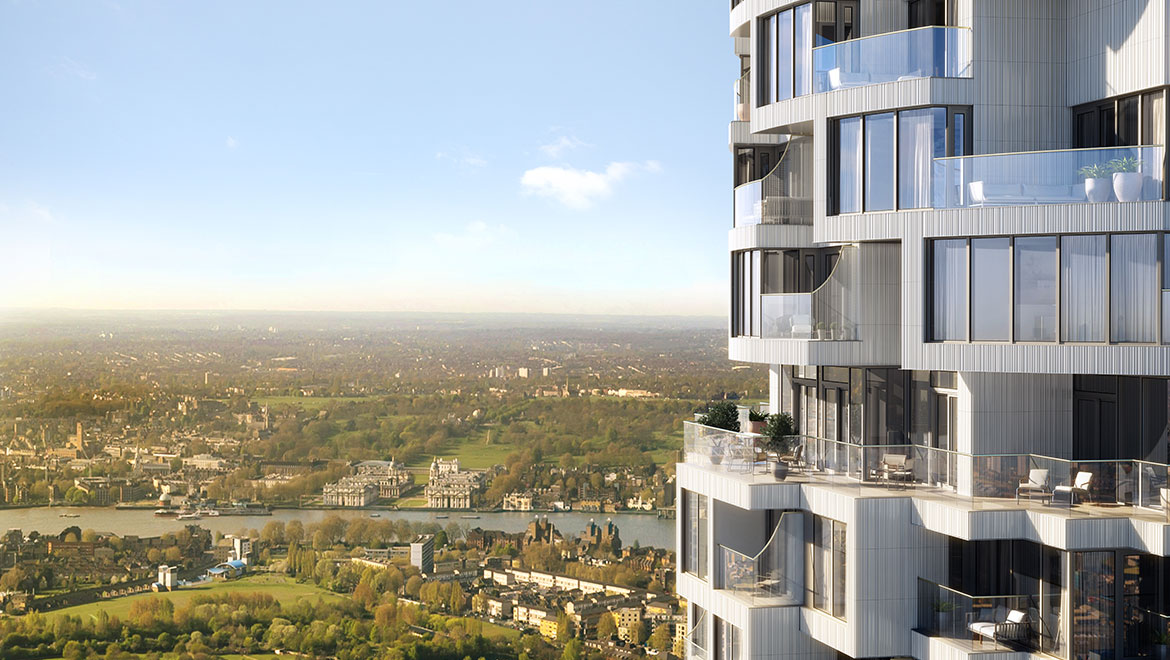
Despite this, Canary Wharf was a place where people come to work and shop, not live and grow. But this is about to change. Thanks to the Canary Wharf Group, this already vibrant area is set to become a bona fide neighbourhood, with high streets, boutique arcades, cultural venues, abundant public art, over nine new acres of plazas and parks, and amenities such as a doctors’ surgery and a primary school. It will be, the Group explains, ‘a place to put down roots, raise a family and be part of a community. A place to call home.’
Heading this development is One Park Drive, designed by Swiss architecture firm Herzog & de Meuron. The firm’s first residential tower in London, One Park Drive is intended to be a standard bearer for domestic architecture across the city.
The project humanises the questions of material and aesthetic that mark Herzog & de Meuron’s finest works, including the totemic Tate Modern Switch House on London’s Bankside, New York’s 56 Leonard Street and the imposing Bird’s Nest stadium in Beijing. How, they ask, should we live in tall buildings? The answer? ‘As humanly as possible.’
It’s appropriate then that this cylindrical, 58-storey structure, located at the entrance to the dock, eschews overwrought styling in favour of holistic purpose. The tower has three distinct zones: the lower Loft; middle Cluster; and upper Bay. The Loft apartments, with high ceilings and wraparound terraces, are some of the largest in One Park Drive, affording a close engagement with the waterfront and surrounding green spaces. The Cluster apartments, with their geometric facades, comprise the heart of the building. Finally, the Bay apartments, in the upper reaches of the tower, feature double-height terraces set back into the building, and are designed to both maximise interior light and afford near-panoramic views across the capital.
Inside, the living spaces are imbued with a sense of calm and luxurious intimacy. Surfaces are tactile and finishes natural; an aesthetic complement to the distinct apartment zones. ‘We look for materials that are as breathtakingly beautiful as the cherry blossom in Japan or as condensed and compact as the rock formations of the Alps,’ explain the architects. The results are as refined as the philosophy that underpins them.
But One Park Drive is not an insular building. Spread across the ground and first floors, the communal areas are fully integrated and positively engage with the surroundings by way of floor-to-ceiling windows. The ground floor houses a reception, concierge, lounge, cinema and library, while a health club with gym, spa and serene 20m-pool is located on the first.
With the opening of Crossrail’s Elizabeth Line in late 2018 – roughly coinciding with the arrival of One Park Drive’s first residents – Canary Wharf will be one of the best connected, most desirable and secure neighbourhoods in London. ‘When we started Canary Wharf, we had a vision,’ says Sir George Iacobescu, chairman and CEO of Canary Wharf Group. ‘We wanted to create not just a collection of exceptional buildings, but a place.’ With this masterplan, they’ve done just that. These 128 acres will soon become a place to call home – a unique architectural achievement and the very best in city and waterside living.
Read more at www.canarywharf.com/residential

The ground floor communal areas engage with the surroundings via floor-to-ceiling windows
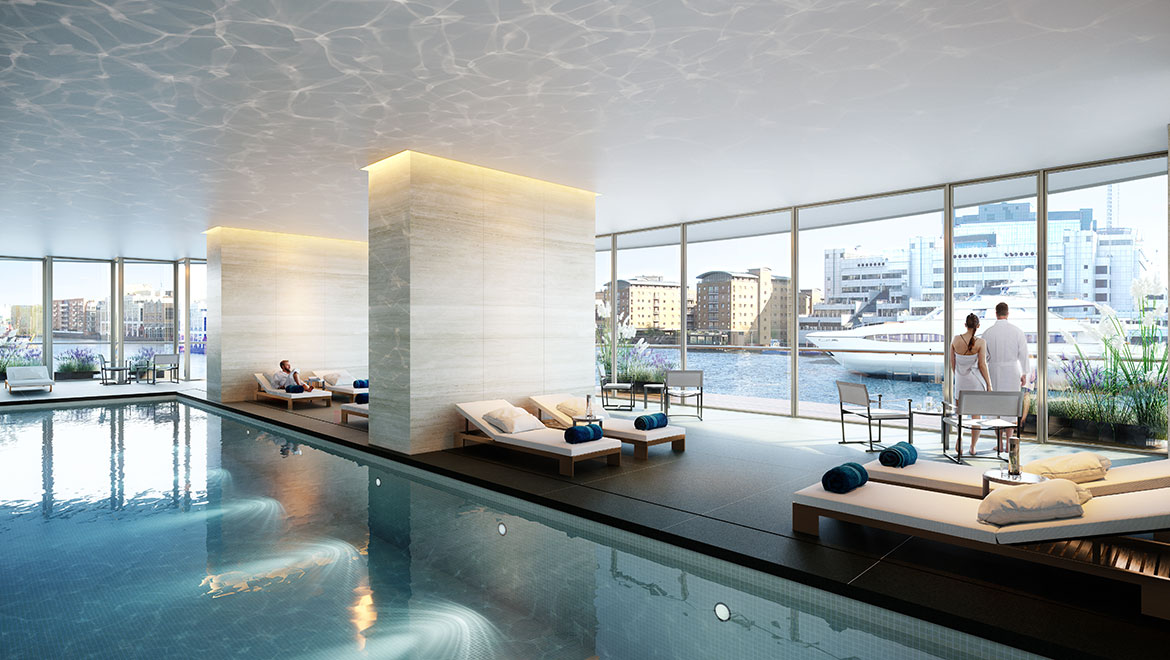
A health club with gym, spa and 20m-pool is located on the first floor

The living spaces are imbued with a sense of calm and luxurious intimacy

The Cluster apartments, with their geometric facades, comprise the heart of the building. All of the apartments afford startling views of the city
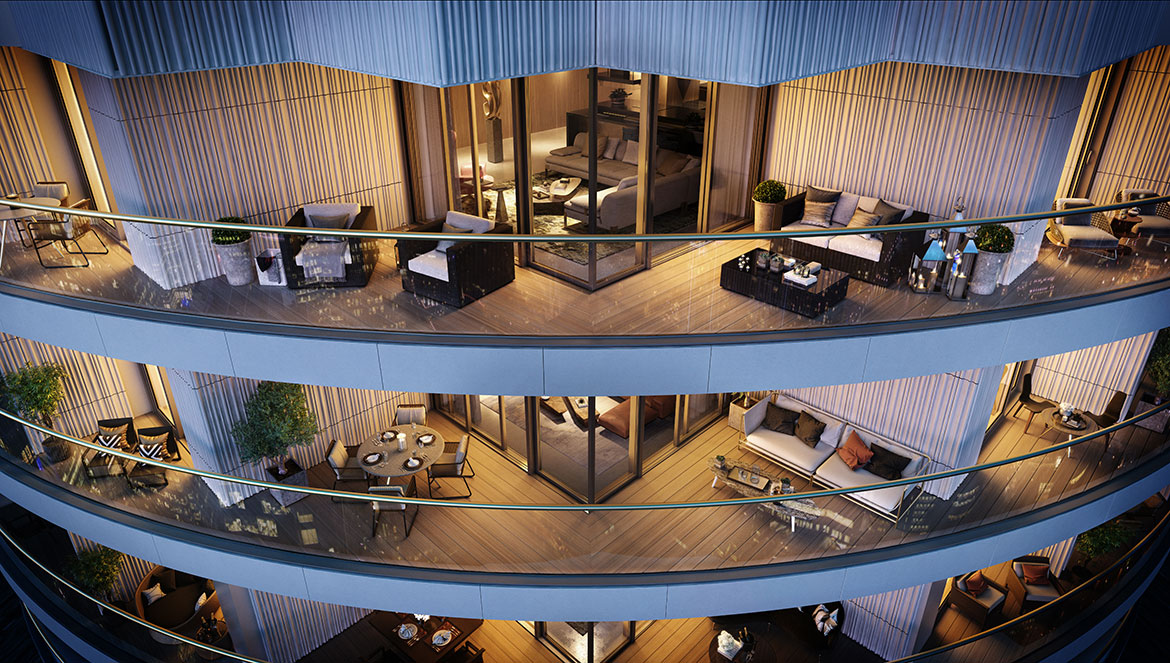
The cylindrical, 58-storey structure eschews overwrought styling in favour of holistic purpose
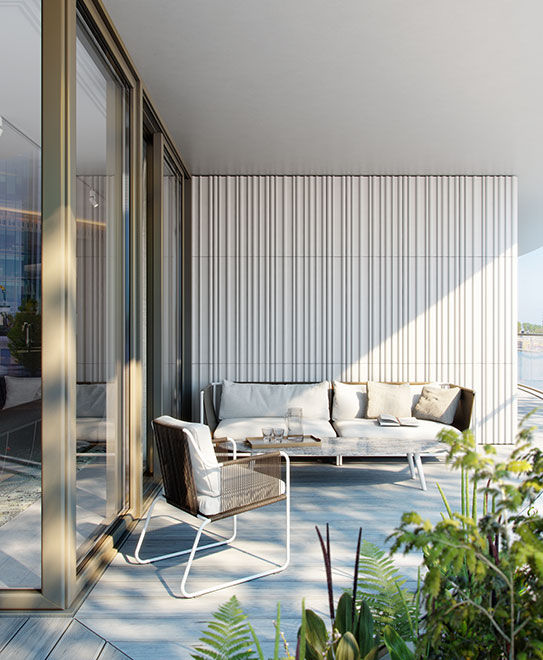
Both indoor and outdoor areas are imbued with a serene ambience
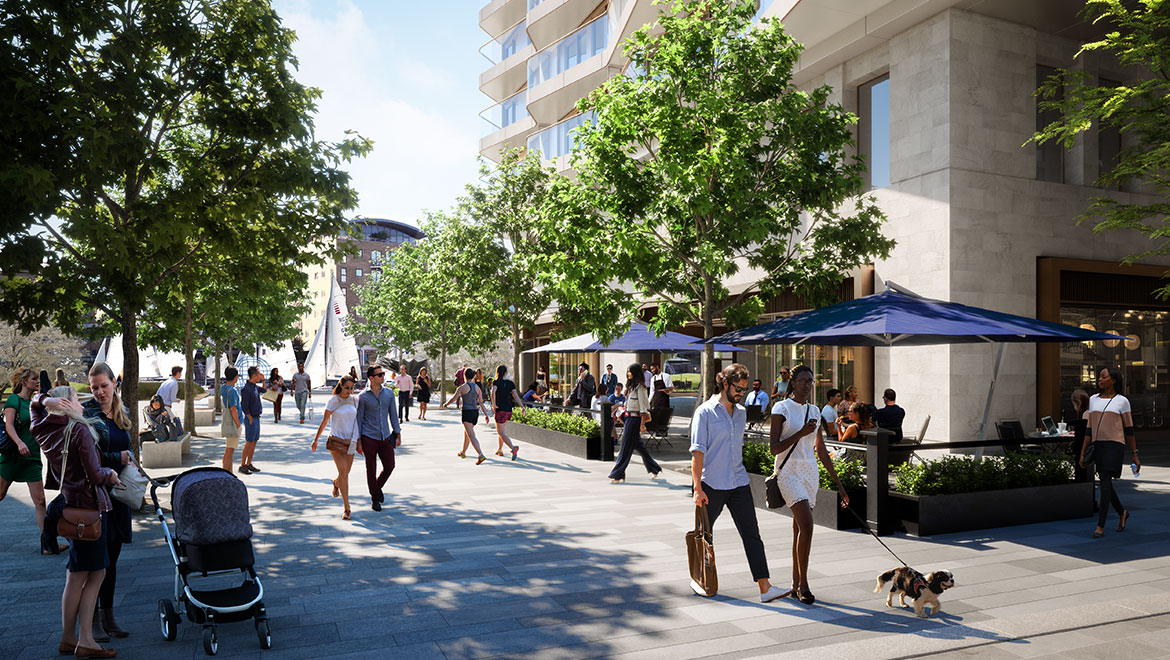
The Group’s vision is set to transform Canary Wharf into a bona fide neighbourhood, with high streets, boutique arcades, cultural venues, and over nine new acres of plazas and parks
Receive our daily digest of inspiration, escapism and design stories from around the world direct to your inbox.
Ellie Stathaki is the Architecture & Environment Director at Wallpaper*. She trained as an architect at the Aristotle University of Thessaloniki in Greece and studied architectural history at the Bartlett in London. Now an established journalist, she has been a member of the Wallpaper* team since 2006, visiting buildings across the globe and interviewing leading architects such as Tadao Ando and Rem Koolhaas. Ellie has also taken part in judging panels, moderated events, curated shows and contributed in books, such as The Contemporary House (Thames & Hudson, 2018), Glenn Sestig Architecture Diary (2020) and House London (2022).
-
 The international design fairs shaping 2026
The international design fairs shaping 2026Passports at the ready as Wallpaper* maps out the year’s best design fairs, from established fixtures to new arrivals.
-
 The eight hotly awaited art-venue openings we are most looking forward to in 2026
The eight hotly awaited art-venue openings we are most looking forward to in 2026With major new institutions gearing up to open their doors, it is set to be a big year in the art world. Here is what to look out for
-
 This modern Clapham house is nestled indulgently in its garden
This modern Clapham house is nestled indulgently in its gardenA Clapham house keeps a low profile in south London, at once merging with its environment and making a bold, modern statement; we revisit a story from the Wallpaper* archives
-
 This modern Clapham house is nestled indulgently in its garden
This modern Clapham house is nestled indulgently in its gardenA Clapham house keeps a low profile in south London, at once merging with its environment and making a bold, modern statement; we revisit a story from the Wallpaper* archives
-
 Step inside this perfectly pitched stone cottage in the Scottish Highlands
Step inside this perfectly pitched stone cottage in the Scottish HighlandsA stone cottage transformed by award-winning Glasgow-based practice Loader Monteith reimagines an old dwelling near Inverness into a cosy contemporary home
-
 This curved brick home by Flawk blends quiet sophistication and playful details
This curved brick home by Flawk blends quiet sophistication and playful detailsDistilling developer Flawk’s belief that architecture can be joyful, precise and human, Runda brings a curving, sculptural form to a quiet corner of north London
-
 A compact Scottish home is a 'sunny place,' nestled into its thriving orchard setting
A compact Scottish home is a 'sunny place,' nestled into its thriving orchard settingGrianan (Gaelic for 'sunny place') is a single-storey Scottish home by Cameron Webster Architects set in rural Stirlingshire
-
 Porthmadog House mines the rich seam of Wales’ industrial past at the Dwyryd estuary
Porthmadog House mines the rich seam of Wales’ industrial past at the Dwyryd estuaryStröm Architects’ Porthmadog House, a slate and Corten steel seaside retreat in north Wales, reinterprets the area’s mining and ironworking heritage
-
 Arbour House is a north London home that lies low but punches high
Arbour House is a north London home that lies low but punches highArbour House by Andrei Saltykov is a low-lying Crouch End home with a striking roof structure that sets it apart
-
 A former agricultural building is transformed into a minimal rural home by Bindloss Dawes
A former agricultural building is transformed into a minimal rural home by Bindloss DawesZero-carbon design meets adaptive re-use in the Tractor Shed, a stripped-back house in a country village by Somerset architects Bindloss Dawes
-
 RIBA House of the Year 2025 is a ‘rare mixture of sensitivity and boldness’
RIBA House of the Year 2025 is a ‘rare mixture of sensitivity and boldness’Topping the list of seven shortlisted homes, Izat Arundell’s Hebridean self-build – named Caochan na Creige – is announced as the RIBA House of the Year 2025